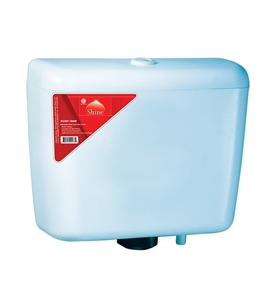A free online version of High Card Flush. Practice for the casino. Try out strategies. Flush and Straight Flush bonus bets. A Royal Flush is a poker hand made out of 10, Jack, Queen, King, Ace, all of the same suit. It is the best out of all the poker hands that can be created in a standard game of poker. FLUSH-IT Septic Energizer is the most versatile and powerful bacterial product available. The natural ingredients, reduced packaging and reduced storage make it ecologically sound. FLUSH-IT also biodegrades pollutants that would normally enter the environment and conserves water because it goes down in one flush.

Modern browsers, OS, and DNS clients store cache of IP addresses and other DNS information automatically. When a computer visits a website for the first time, it stores the website's DNS information in the cache, and on the next visit of the same website, it looks in the cache to see if the web site's information is present to use. An old version of a site opens if the website's DNS information has changed since the computer's last visit.
Flushing the cache removes all the data stored in the cache, forcing the computer to find the new DNS information for the website. It is usually done to speed up the process and minimize requests for the same hostnames. When IP addresses are changed, or bad results are cached, its necessary to clear the DNS cache. DNS cache can be cleared via command line or from browsers also. Steps to flush DNS Cache for major operating systems and browsers are as below.
Jump to:
How to Flush DNS in Windows 10?
Command Prompt and Windows Powershell, which is a new addition to Windows, can be used to clear DNS cache.
Option 1 – Command Prompt
To reset the DNS resolver cache, perform the following steps:
- Click the
Startbutton, then typecmd - Right-click
Command Prompt, then chooseRun as Administrator. - Type
ipconfig /flushdnsthen pressEnter. (be sure there is a space before the slash)
A command box will flash on the screen for a split second, and the DNS Resolver cache is cleared.
Besides, there are some other related commands that you might be interested in:
- ipconfig /displaydns: It displays your current DNS cache under Windows IP configuration.
- ipconfig /registerdns: To register your DNS cache recorded in the Hosts file.
- ipconfig /release: To release the current IP address settings.
- ipconfig /renew: To reset and request a new IP address.
Option 2 – Windows PowerShell
- Select the
Startbutton, then typepowershell - Select
Windows PowerShell - Type the following command, then press Enter:
Clear-DnsClientCache
How to Flush DNS in Windows 8 and 8.1?
Because of the system security policies run cmd as administrator user and follow below steps to flush DNS cache.
- Press
Windows key + Xand select the Command Prompt (Admin) option from the Power User menu. - Type in the command
ipconfig /flushdnsand pressEnter
How to Flush DNS in Windows 7 and Windows Vista?
To flush DNS on an upgraded version of Windows is almost as easy as it is in the previous versions but due to Microsoft's upgraded security system requirements, you must run the command prompt with administrator privileges.
- To flush DNS through the
command prompt, navigate as shown (Start > All Programs > Accessories > Command Prompt) - to have
administrator privileges, you must doright click on the command promptapplication and chooseRun as Administrator. - Type in the command
ipconfig /flushdnsand pressEnter
Shortcut
Type in cmd into the Windows Vista / Windows 7 start menu search field and then right click on the cmd.exe result instead of navigating through the various sub-menus.
Windows 98/NT/2000/XP Flush DNS
Given below steps will help you to clear your windows DNS cache.
- To access command prompt (
Start > Run >). - Type the
cmdand hitEnter - In the CMD window that you just opened, Type in the command
ipconfig /flushdns
Mac OS X Flush DNS

Flushing the DNS in Mac OS X is an easy process, but the steps taken will depend on which version of OS X is running as your operating system. First, make sure you open the Terminal on your computer.
Once opened, run the command below that corresponds to your version of OS X.
OS X 12 (Sierra) and later
macbook$ sudo killall -HUP mDNSResponder;sudo killall mDNSResponderHelper;sudo dscacheutil -flushcacheOS X 11 (El Capitan) and OS X 12 (Sierra)
macbook$ sudo killall -HUP mDNSResponderOlder versions
OS X 10.10 (Yosemite)

Versions 10.10.4+
macbook$ sudo dscacheutil -flushcache;sudo killall -HUP mDNSResponderVersions 10.10.1, 10.10.2, 10.10.3
macbook$ sudo discoveryutil udnsflushcachesOS X 10.9 (Mavericks)
macbook$ dscacheutil -flushcache; sudo killall -HUP mDNSResponderOS X 10.7 (Lion) and 10.8 (Mountain Lion)
macbook$ sudo killall -HUP mDNSResponderOS X 10.5 (Leopard) and 10.6 (Snow Leopard)
macbook$ dscacheutil -flushcacheRed Flush Online Casino
OS X 10.4 (Tiger)
macbook$ lookupd -flushcacheiOS Devices
- Press and hold both the Sleep/Wake and Home buttons for at least 10 seconds, until you see the Apple logo.
Linux Flush DNS
If you are running the nscd Name Service Cache Daemon, then you will need to do the following.
- Open up a
command terminal(either as root or run step 2 withsudo) - Run the command in the terminal:
/etc/init.d/nscd restart
TV Devices
- Step 1.
Close apps:Close the app completely. Make sure it is not running in the background as well. - Step 2.
Open App:Open the app again. DNS Cache should is cleared.
Google Chrome Browser
This method can be used for the Chrome browser regardless of the operating system.
- Start
Google Chrome. - In the address bar, type
chrome://net-internals/#dns. Google Chrome displays a list of hosts in itsinternal DNS cache. - Click
Clear host cache. - In the address bar, type
chrome://net-internals/#sockets. - Click
Close idle sockets, and then clickFlush socket pools.
For Webmasters/Developers
DNS cache can be cleared on the client-side, but the same can be done on DNS Serves aswell to speed up the DNS Propagation process. It can be achieved in the following ways:
Public DNS services like Google, Cloudflare, OpenDNS, VeriSign enable users to request a DNS flush for specific domains.
Google Public DNS:
- Visit Google's Public DNS Flush Cache page.
- You'll see a page with content similar to this:

Cloudflare Public DNS
- Visit the Cloudflare purge Cache page.
- You'll see a page with content similar to this:
OpenDNS PublicDNS
Flush Online
- Visit the OpenDNS Cache check page.
- It will display DNS results from its multiple server locations. At the bottom, press the
Refresh The Cachebutton to clear the DNS cache.
VeriSign PublicDNS
- Visit the VeriSign DNS Flush Cache page.
- Enter the domain and validate CAPTCHA and press the
REFRESH CACHEbutton. - You'll see a page with content similar to this:
Flash Online Latino
Reduce TTL
- TTL can be defined in your DNS settings. DNS servers respect TTL and reducing TTL can speed up the process of DNS propagation when changing servers IP's of a web application.